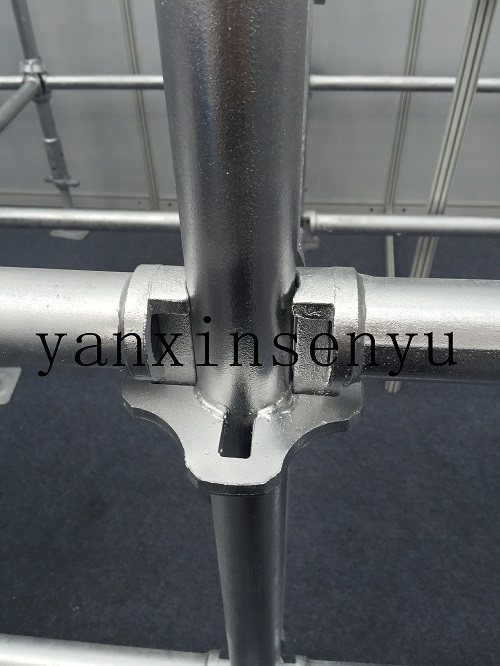The wheeled scaffolding is a factory-made, on-site scaffolding. It is one of the most commonly used scaffolding in the world today. It consists of a wheel buckle, a cross support, a connecting rod, a shackle-type scaffold or a horizontal frame, a lock arm, etc., and then a horizontal reinforcement rod, a scissors support, a sweeping rod, a sealing rod, a bracket and a base, and a connection is adopted. A standardized steel pipe scaffolding that connects the wall to the main structure of the building. The wheeled scaffolding wheel can be used not only as an external scaffold, but also as an internal scaffold or a full scaffolding.
The wheeled scaffolding discs are made of ordinary steel pipe materials and are made of tool-type standard parts. They are assembled at the construction site. The basic unit is a pair of door frames, two pairs of scissors, a pair of horizontal beams and four connectors, as shown in Figure 3-7. A number of basic units are vertically stacked by connectors and buckled to form a multi-layer frame. In the horizontal direction, the reinforcing elements and the horizontal beam frame are used to connect adjacent units into one body, and the inclined ladder, the railing column and the cross bar are combined to form an outer scaffold which does not change in phase.

How to improve the overall stability of the wheeled scaffolding wheel?
Because the single wheel buckle has a flat structure, this determines that the wheel buckle support system has better anti-overturning ability in the lateral direction and poor anti-overturning capability in the longitudinal direction, although cross support is provided in the entire wheel support system. The anti-longitudinal overturning ability is still limited, and the site generally adopts measures such as setting scissors and struts to improve the longitudinal anti-overturning ability. In addition to the above conventional methods to improve the vertical anti-overturning ability, there is actually a more practical way to improve its vertical anti-overturning ability, which is to change the traditional wheel-locking direction. Under the main beam of the structure, the wheel buckles are placed in the direction of the beam, and the structural plates on both sides are erected in the direction of the vertical main beam. Through the above improvements, the entire support system has the ability to resist the overturning from the wheeled scaffold itself in both directions.













